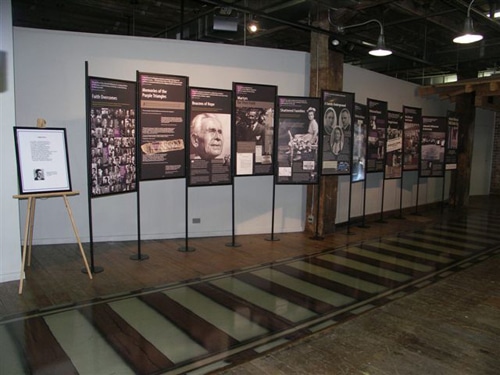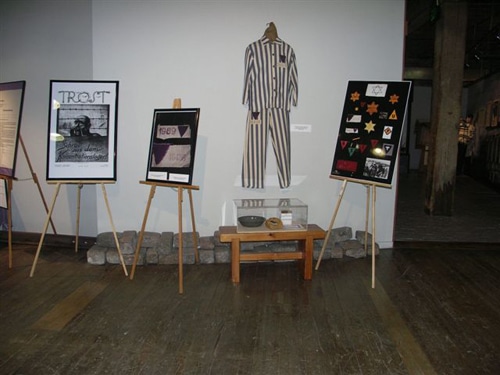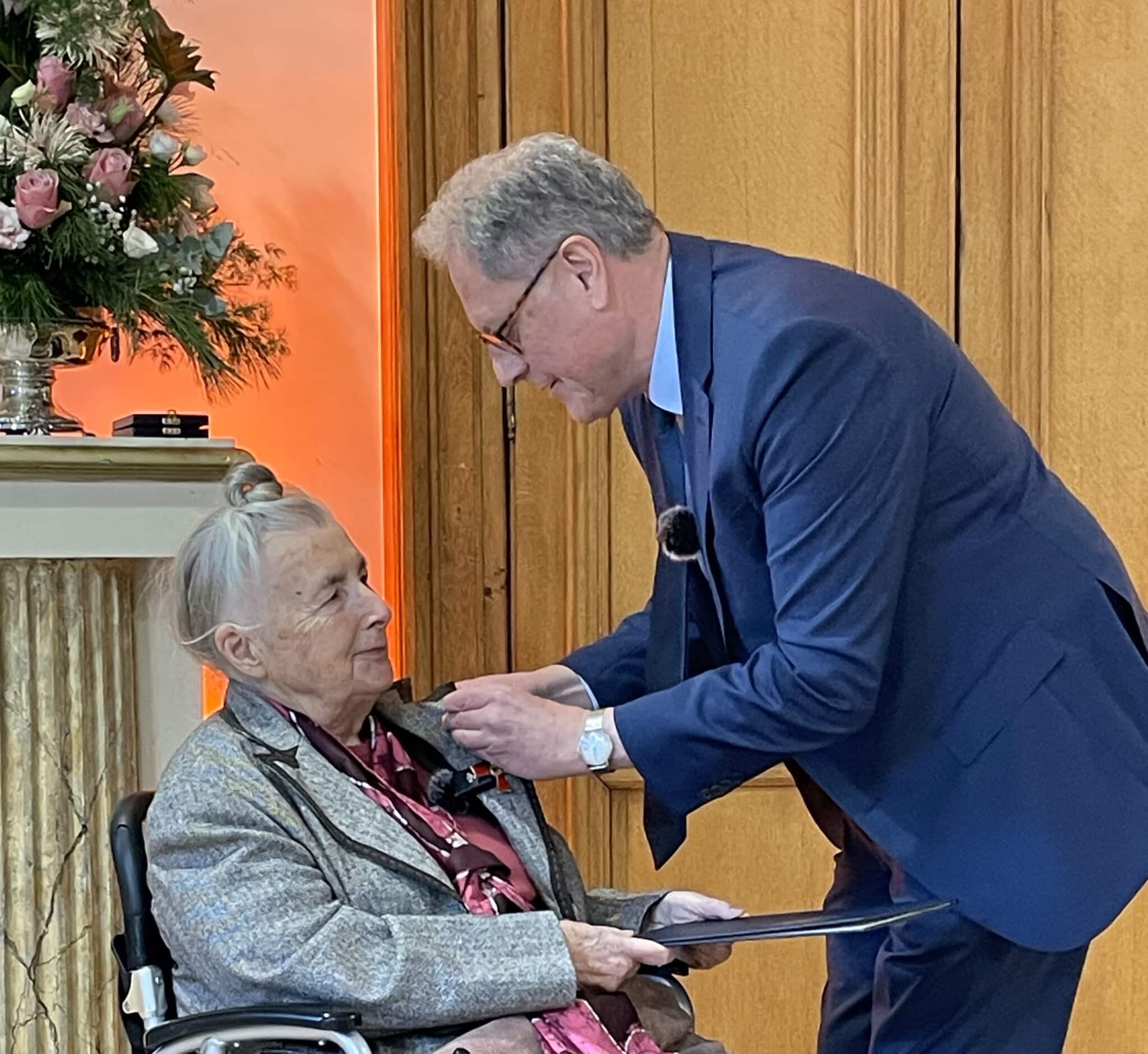Sponsored by the Arnold Liebster Foundation, this traveling exhibit Faith under Fire premiered at the Florida Holocaust Museum on January 14, 2006.

Faith Under Fire Traveling Exhibit in Holocaust Gallery at Virginia Holocaust Museum, Richmond, Virginia
The exhibition is composed of 12 panels relating the persecution inflicted on Jehovah’s Witnesses during the dark days of the Nazi regime and recounting the courageous lives of these non-violent resisters. Harassed, threatened with death, and often locked up in concentration camps (or juvenile penitentiary homes), these “Bible Students” (as Jehovah’s Witnesses were then called) succeeded in staying true to their faith.

Additional information about Jehovah’s Witnesses in Holocaust Gallery at Virginia Holocaust Museum, Richmond, Virginia
On the eve of the Second World War, the community of Jehovah’s Witnesses consisted of about 35,000 members in Germany and the occupied lands. They were persecuted, imprisoned, and deported to the concentration camps especially because of their refusal to give the Heil Hitler salute, to participate in Nazi spectacles, or to take part in war. This was the only religious group to which the Nazis gave their own distinctive symbol, a purple triangle, which they wore on their striped uniforms.
In the 1930s, Jehovah’s Witness literature denounced the existence of and horrifying conditions in the concentration camps. For example, in 1937 an issue of the journal Consolation (Trost in German) exposed the use of poison gas at the Dachau camp. The following year, another issue of Trost carried the cover title «Schrei aus dem Konzentrationslager» (“Cry from the Concentration Camp”) with the image of an inmate calling out from behind barbed wire (Trost, February 15, 1938, printed in Bern, Switzerland; see reproduction of the cover page in the above photo, left.)
